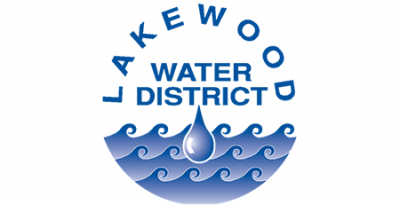New Treatment for PFAS at Ponders Well
New Treatment for PFOS and FFOA at Ponders Wellsite
Providing excellent water quality to our customers is the top priority of Lakewood Water District. As part of that commitment, the District has been voluntarily testing our wells for perfluoroalkyl substances, referred to as PFAS. Through the testing, we have found increasing levels of two specific PFAS – called PFOS and PFOA – at our Ponders Wellsite.
While these levels are below the EPA’s current Health Advisory Level, we are being proactive in evaluating treatment options, primarily a GAC (Granular Activated Carbon) system. This treatment will remove PFOS and PFOA to below EPA health advisory levels, designed to protect even the most sensitive populations over a lifetime of exposure. The wellsite’s existing treatment facilities are aging and are scheduled to be replaced, with construction planned to commence this fall. The wells will be taken offline during construction. Our response continues to be our commitment to provide excellent water quality to all our customers.
What are PFOS and PFOA and where did they come from?
Until 2002, PFOS and PFOA were used in numerous consumer and industrial products across the U.S., including products as diverse as non-stick pans and fire retardants. Because of their widespread use, PFAS (perfluoroalkyl substances) are thought to be present at very low concentrations in many water sources. EPA has been testing water sources across the country to understand how common PFAS are and at what levels they are present.
We started voluntary testing because PFAS were found in wells at Joint Base Lewis McChord, which is located just to the east of our system. The Base found elevated levels of two PFAS—PFOA (perfluorooctanoic acid) and PFOS (perfluorooctanesulfonic acid). The likely source is PFAS-based firefighting foam that was used at the base for decades, until the early 1990s.
What levels of PFOS and PFOA are safe for humans?
The EPA has established a Health Advisory Level for PFOS and PFOA of 70 parts per trillion, designed to protect even the most sensitive populations over a lifetime of exposure. A part per trillion is equivalent to one grain of sugar in an Olympic size swimming pool. PFAS are not currently regulated, meaning there isn’t a rule that requires treatment if readings are above a particular level, but Washington Department of Health is considering implementing a regulation that would require treatment. We are being proactive in protecting water quality for our customers and are not waiting for a rule to be implemented.
What levels of PFAS have been found in our system?
To date, all levels found in the Lakewood system have been below EPA health advisory levels. In most recent testing, the combined level of PFOS and PFOA at Ponders Well was 63 parts per trillion, below but close to the EPA Health Advisory Level of 70 parts per trillion. PFAS have been detected at three other wells but are still far below health advisory levels at those locations. We are continuing to monitor levels at those wells.
What is the new treatment?
The treatment method decided upon is Granular Activated Carbon (GAC). GAC is a proven, efficient method for filtering out PFOS and PFOA to levels below what we can detect, far below health advisory levels. GAC is used at thousands of municipal treatment facilities across the U.S. as well as in many home filters.
How will these improvements be funded?
The District is committed to maintaining affordability for our customers by identifying the most cost-effective and reliable solution. The new treatment system was not included in the current budget, but District staff are working with the Board to fund the project. We are negotiating with the Base leadership with the goal of securing reimbursement for the District’s costs for PFAS treatment. To protect water quality, we are moving forward with treatment for PFOS and PFOA while we pursue reimbursement.
What are the treatment facilities being replaced at Ponders Well?
Ponders Well’s existing treatment system uses air stripping to remove dichloroethylene, trichloroethylene, and tetrachloroethylene—all chemicals commonly used as dry-cleaning fluid and industrial solvents. The treatment system has been working successfully for 25 years but is now beyond its lifespan and needs to be replaced. The replacement treatment facility is being funded through a State grant.

